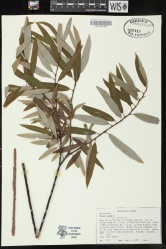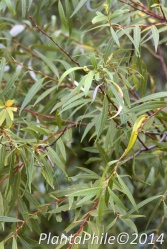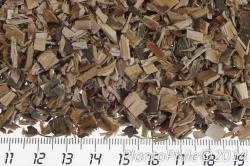| A member of the Willow Family (Salicaceae), black willow is a small to medium-sized tree 30 to 60 ft high and about 14 inches in diameter with a broad, irregular crown and a superficial root system.
Leaves are simple, alternate, deciduous, narrow, lanceshaped, with tapered bases, rounded base, finely toothed margin, blade yellow-green on both sides, with a few small hairs on the lower surface; petiole slender. Flowers of black willow: male and female catkins on separate trees. Catkins are 4-5 cm long, on ends of leafy shoots, many small, yellow-green flowers without petals. Twigs are light-red, slender, and flexible. Buds narrow, conical, orange-brown; leaf scars narrow, crescent shaped; broad, flat, often shaggy ridges; pith pale brown, small. The bark is dark gray-brown to nearly blackish, divided into deep fissures separating thick, interlacing, sometimes scaly ridges.
Black willow is adapted wherever ample soil moisture is found. Black willow grows best where the average annual rainfall is 51 inches, of which 20 inches falls during the growing season, April through August. The estimated life span for black willow averages 65 years with a range of 40 to 100 years. The wood is of moderately light to light density, moderately soft. It does not splinter easily.
Source: United States Department of Agriculture Natural Resources Conservation Service (2010) [3]
|
|
|


